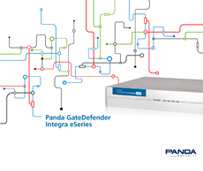How to find out if your email and passwords have been hacked
Cyber-attacks do not resemble the image that the collective imagination has of them. Far from dark screens full of binary code, hacks are hugely successful largely because they go unnoticed. Data breaches affect hundreds of thousands of users at a time, and even if you use your devices sensibly, your passwords and personal information may now be exposed or for sale on the Deep Web. If your data has been leaked, any hacker can get hold of it and access your accounts and possessions, steal from or impersonate you.
Find out if your personal data has been stolen
At Panda, we offer a simple, free solution. With the support of our sister company WatchGuard, we have developed a tool that scans the Dark Web and checks if the information associated with your accounts has been compromised: Dark Web Scanner.
You can access Dark Web Scanner from your My Panda account.
If you do not have a My Panda account
You do not need to be a Panda Security customer to use this feature. You can register for free and enjoy this and other services from the following link:
At Panda Security, we work to offer you the most advanced solutions to protect your family and your business from the dangers of the Internet. We have been at the forefront of cybersecurity for 30 years, leading the way to a safe and secure Internet. Discover our free and premium services.






